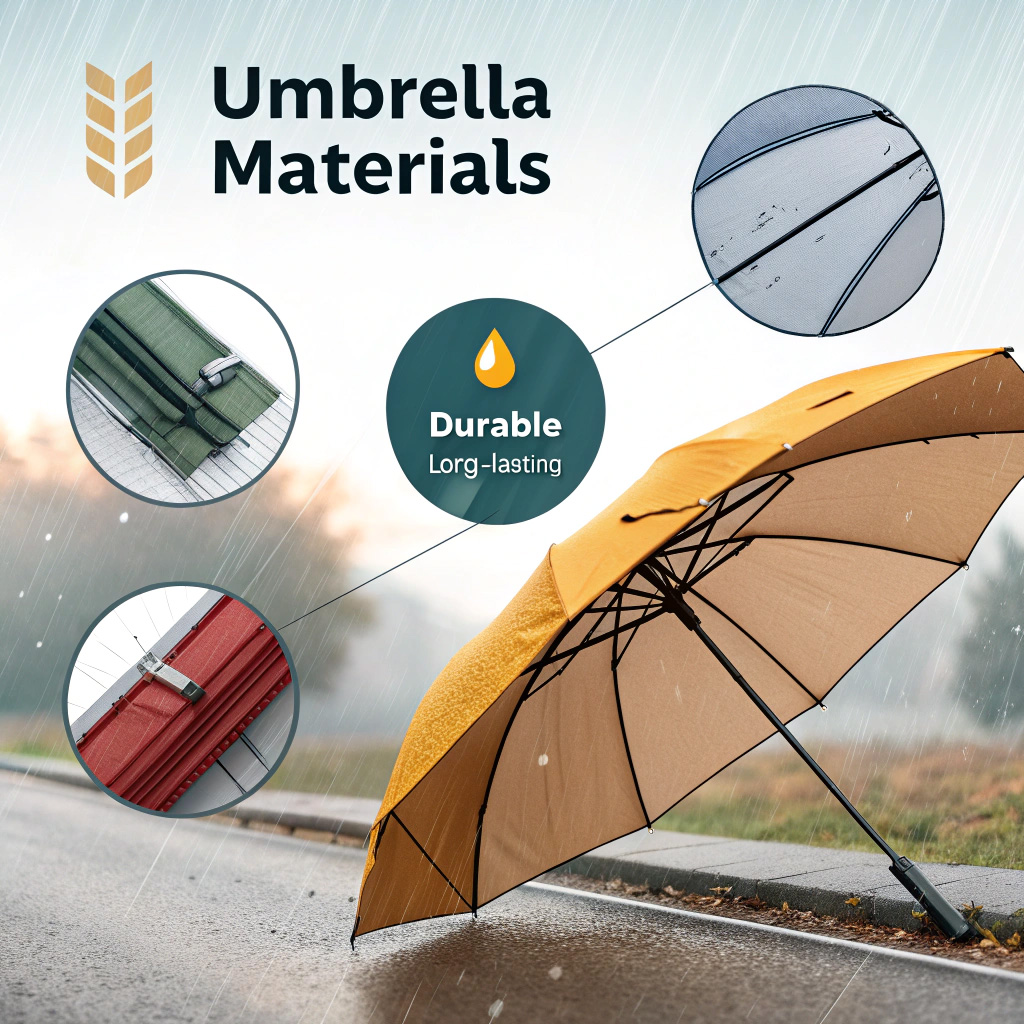Rain catches everyone off guard at some point. A solid umbrella turns that moment from a scramble into a simple fix. This guide lays out the essentials to consider before you spend money on one. It covers types, materials, frames, and extras that make a difference. Think of it as straightforward advice from someone who has ruined too many cheap models in wind and downpours. HF Umbrella builds options that hold up, and their approach to quality shapes a lot of what follows.
Understand Umbrella Types
Not all umbrellas fit every need. Size, shape, and opening style change how you use them day to day.
Compact folding umbrellas collapse small. Most shrink to under 30 cm when closed, perfect for bags or pockets. They open to full coverage with one button on better models. Three-fold designs pack tighter than two-fold, but they can feel less stable in gusts.
Stick umbrellas stay long and straight. Canopies span wider, often 100 cm or more, and shafts give better balance in wind. They do not fold, so storage takes space, but the trade-off is strength. Classic wood handles add grip and weight for control.
Golf or storm umbrellas go big. Canopies reach 120 cm across or larger, shielding two people if needed. Vented tops and thick frames handle heavy weather. They suit open areas or rough conditions, though carrying one daily feels bulky.
Parasol styles focus on sun first, rain second. UV coatings block rays, and light fabrics reflect heat. Some double as rain cover with waterproof layers. Choose these for hot days or travel where shade matters.

Material Choices That Last
The canopy decides if water stays out. Cheap fabric soaks through fast; good ones repel and dry quick.
Polyester leads for value. It weighs little, comes in endless colors, and resists fading. Water beads on treated versions, but untreated ones wet out over time. Expect some creases when folded.
Nylon feels slick and packs tiny. It dries almost instantly and stretches without tearing. Wind can stress it more than other fabrics, so pair with strong ribs.
Pongee offers a step up. Tight weave mimics silk but repels water better. Rain rolls off, and the fabric snaps crisp when opened. It costs more yet wears longer without pilling.
Coatings add protection. Teflon or similar layers make water bead stronger and speed drying. Check for them on mid-range models. Sealed seams stop leaks at stitch lines.
Frame and Ribs: The Backbone
A weak frame flips or snaps at the first breeze. Strong builds flex and return to shape.
Aluminium ribs keep weight down and fight rust. They bend under pressure without breaking on most days. Eight ribs give standard coverage; ten or more improve tension and wind flow.
Fibreglass ribs flex farther. They spring back after gusts that would wreck metal. Salt air does not corrode them, ideal near water. Higher cost, but fewer replacements.
Shafts set the core. Steel offers max strength for large models. Aluminium cuts weight for daily carry. Carbon fiber blends both but raises price.
Joints connect ribs to shaft. Reinforced tips and metal caps prevent pull-out. Cheap plastic cracks; avoid it.
Handles and Grip
Comfort shows in the hand. Shape and material change the feel over minutes or miles.
Crook handles curve for hanging or easy hold. Wood warms fast and looks sharp. Plastic versions slip when wet unless textured.
Straight handles suit compact models. Rubber or foam grips stay secure with gloves. Leather wraps add style and soft touch.
Telescopic shafts adjust height on some sticks. Lock buttons must click firm; loose ones collapse mid-use.
Wind Resistance Features
Gusts ruin more umbrellas than rain. Smart designs fight back.
Vented canopies let air pass through a top layer. Pressure drops, reducing flip risk. Double canopies work best; single vents help on budget picks.
Flexible ribs absorb shock. Fibreglass shines here. Rigid frames transfer force to joints and break.
Tested wind ratings guide choices. Look for 50 km/h or higher on storm models. Real use often exceeds lab numbers, so add margin.
Size and Coverage
Match canopy to your needs. Solo users manage 90 to 100 cm span. Couples or bags need 110 cm plus.
Measure folded length for portability. Under 25 cm fits small bags. Over 40 cm suits briefcases but not pockets.
Weight affects carry. Compact models stay under 400 grams. Golf types hit 700 grams or more for stability.
Opening Mechanisms
Manual opens require push and lock. Simple, cheap, and fixable. Springs wear over years.
Automatic opens with one button. Springs launch the canopy fast. Good ones include close buttons too.
Reverse close folds inward. Wet side stays inside, keeping bags dry. Clever for cars or tight spaces.
Extras Worth Considering
Small touches add real value.
UV protection blocks sun on dual-use models. UPF 50+ ratings matter for long exposure.
Reflective trim lights up at night. Safety edge for dark walks.
Carry sleeves protect bags from drips. Matching ones look tidy.
Wrist straps prevent drops in wind. Elastic loops beat rigid hooks.
Maintenance Keeps Them Alive
Even top umbrellas need care.
Dry open after use. Closed wet canopies grow mold.
Clean with mild soap and water. Avoid harsh chemicals on coatings.
Store loose, not tight. Cramped folds stress fabric.
Check joints yearly. Tighten screws if loose.
Signs It Is Time to Replace
Ribs poke through fabric. Rust spreads on metal. Handle cracks or slips. Canopy tears or leaks. Any break means upgrade time.
Budget and Value
Entry models start low but fail fast. Mid-range buys last seasons with care. Premium builds use top materials and hand finishes for years of service.
HF Umbrella balances cost and craft. Strong frames meet fine details without excess price. Each piece gets checked for balance and stitch quality.
Final Checklist Before Purchase
A thoughtful choice means one umbrella serves years instead of months. It stays ready when clouds gather, handles the worst weather, and feels good every time you grab it. Step out dry and confident, no matter what falls from the sky.


